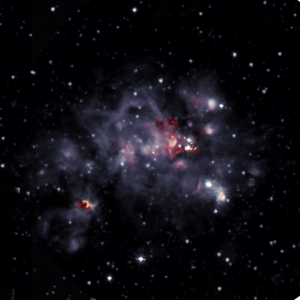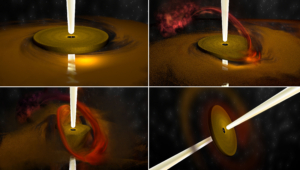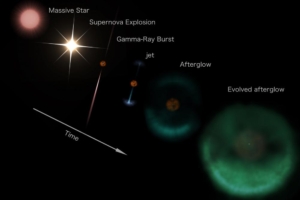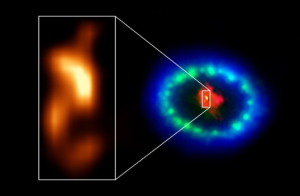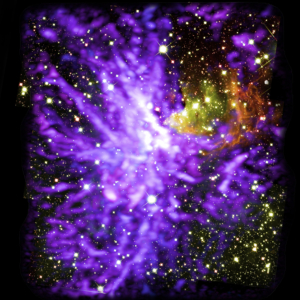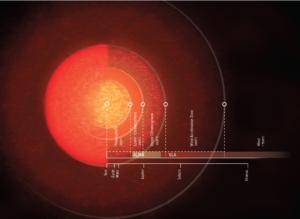New, high-resolution VLA images of a giant molecular cloud where new stars are being born show changes since a set of observations made more than two decades ago. Tracking changes in this region over time can reveal new details about the process of star formation and the interactions of outflows from young stars.
ALMA Shows Massive Young Stars Forming in “Chaotic Mess”
Astronomers used ALMA to study three young, high-mass stars and found, not the orderly, stable process of accreting new material seen in low-mass stars, but instead a “chaotic mess.” They conclude that their observations support a proposed “disordered infall” model for massive young stars that was supported by earlier computer simulations.
Catching a Radio Surprise
The Very Large Array Sky Survey (VLASS) is an ambitious project to make a high-resolution radio map of nearly…
ALMA Finds Possible Sign of Neutron Star in Supernova 1987A
Based on ALMA observations and a theoretical follow-up study, scientists suggest that a neutron star might be hiding deep inside the remains of Supernova 1987A.
Image Release: Stellar Fireworks Celebrate Birth of Giant Cluster
Astronomers created a stunning mosaic of ALMA and Hubble images, showing celestial fireworks in star cluster G286.21+0.17.
Supergiant Atmosphere of Antares Revealed by Radio Telescopes
An international team of astronomers has created the most detailed map yet of the atmosphere of the red supergiant star Antares.






